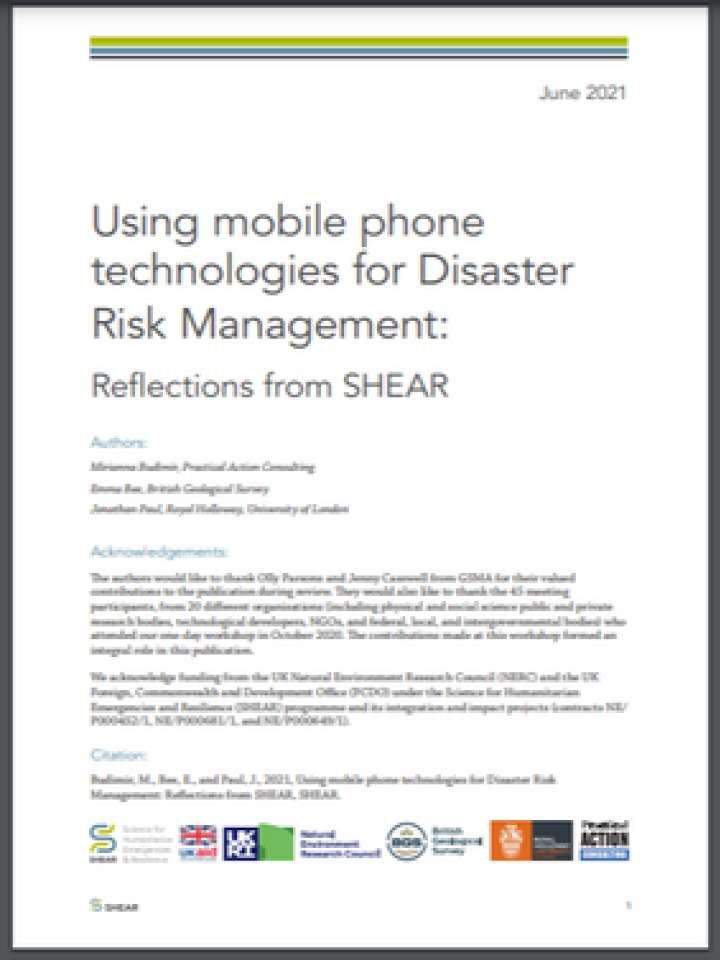Using mobile phone technologies for Disaster Risk Management: Reflections from SHEAR
This publication summarises the key learnings from the workshop: how mobile phone technologies are used in DRM, and the opportunities and lessons for applied research. In October 2020, the Science for Humanitarian Emergencies and Resilience (SHEAR) programme hosted a virtual workshop which explored the use of mobile technologies to support disaster risk management. The workshop brought together approximately 45 members from 20 organisations across the SHEAR Programme and a selection of external experts to share and record their experiences. Participants included physical and social scientists, public and private researchers, technological developers, Non-Governmental Organisations (NGOs), and federal, local, and intergovernmental officials. The breadth and depth of expertise and experience from workshop participants provided an opportunity to gather key learnings and examine common challenges and opportunities where mobile technologies could be usefully harnessed through different stages of the DRM lifecycle, and across different regions.
SHEAR research has demonstrated that mobile phones are useful or promising for all elements of DRM. Mobile phone technologies have the potential to provide access to instant and immediate data, which increases rapid and reliable dissemination of information and action during a disaster in the short term, educates and empowers local people in the medium term, and ensures scientific capacity building in longer-term. The SHEAR-hosted workshop highlighted that effective use of mobile phone technologies in DRM requires appropriate consideration of local context, should continuously and iteratively adapted to cater to the needs of the users and stakeholders, and project design should be human-centred, and demand-driven as much as possible.
Explore further
